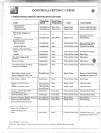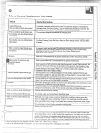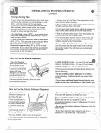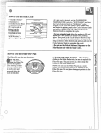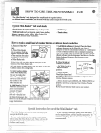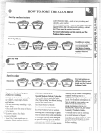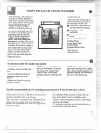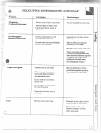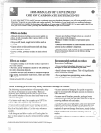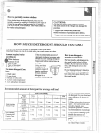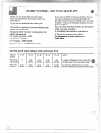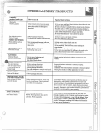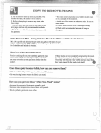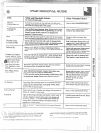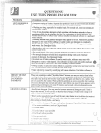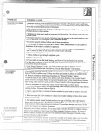
Is your water hard? If it is, and if you use a carbonatetype non-phosphatedetergent,you will mostprobably notice
limestone*depositson your clothesand washer surfaces.The hardnessof your water and your washingfrequency
will determinehow rapidlythe limestonewill buildup. If your wateris VERY HARD (11or more grains)and if you
washjust a few loads a week,
you may see limestonebuildupsinjust a few months.
Although limestone buildupoccurs more rapidly on
cotton, it will eventually affect various fabrics in the
following ways:
@Gives a stiff, harsh, rough feel to fabrics such as
toweling.
oCauses colors to fade and become dull and dingy.
~Causes graying of fabrics.
oLeaves a white, powdery residue on dark-colored
items.
~Causes spot-fading of bright colors as a result of
direct contact with detergent.
~Reduces wrinkle-resistanceof permanent press
fabrics.
~Destroys effectiveness of flame-retardant finishes on
cottons such as children’ssleepwear.
~Increases fabric wear because of the scrubbing action
between limestone deposits on the fabrics during
washer agitation.
~Unsightly buildup on all washer surfaces exposed to
the wash solution.
a Mat-Iike, crusty formations caused by lint adhering to
the sticky limestone deposits.
oIncreased service calls because of limestone deposits
k
in- he pump, recirculation water hoses, filters and other
wa her parts.
~Reduced usefuI life of washer.
Recommendedmethodstoreduce
limestonebtildups
e Use a powdered phosphate detergent or a liquid
detergent if these are available in your area.
@Install a home water softener. This will significantly
reduce limestone buildup.
~Use a packaged non-precipitating water softener,
such as Calgon brand with phosphate.
Goodwashingpracticesmay deIay limestonedamagetoClothes
The followingrecommendationswill temporarilydelay
~Increase amount of detergent.See guide on opposite
the cfftcts of:Iimcstoncon your clothes. These are
page for recommended detergentamountsin relation to
gener:dlygood washing practicesand will give bettel
water hardness.
soi1removal whether or not you have hard water or use
*Increaseuse of bleaches,presoaks,packaged water
c;lrbonatcdetergent.
conditioners,prewash soi~and stain removers to help in
QUse hotter wash water, for example up to !50°F.for
removing stubborn soilsand stains.
cottons.”This also improves oily-soilremoval.
e Use greater care in sorting loads.Wash very dirty loads
@if’you wash in cooler water to saveenergy,use more
separatelyand increase detergent to help keep dirt from
dc[ergent [opromote better washing.Also be sure to use
redepositingon less soiled items. Wash delicateitems
;JIuL]cI)or]b]eachable fabi.ics.Use hot water whenever
separatelyto prevent damage from heavy, s~rdy clothes.
.——..=.. .——
..-.—..,- ,.-.... ._..—_-.-—---- ——=—.,-... .-------- -—..,.
]
I



